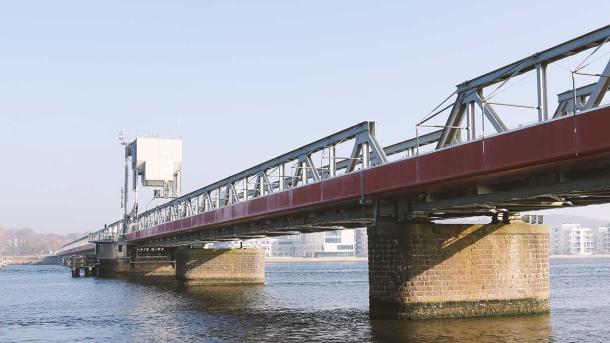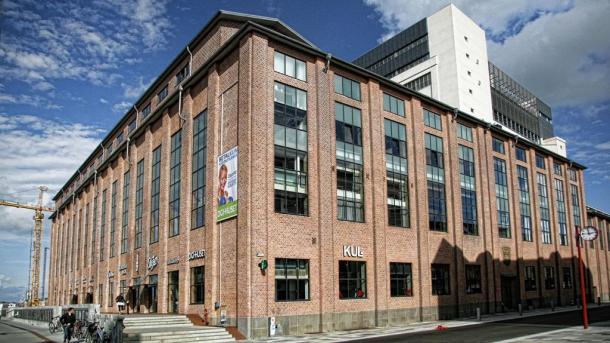
Exploring Aalborg's Architecture Through History
In Aalborg, you can experience architecture from the Viking Age to the present day. Join us on a journey through history from the simple harbor at the mouth of the fjord in the late 10th century to the Aalborg we know today, filled with impressive architecture and experiences for all.
Year 400 - Lindholm Høje
The burial site at Lindholm Høje, excavated in the 1950s, is one of Denmark's most beautiful ancient monuments. The many stone settings on the hill mark nearly 700 cremation graves, and at the Viking Museum, there are exhibitions about Viking life and ancient times in the Limfjord region.
Year 1624 - Jens Bangs House
In 1624, Jens Bang's House on Østerågade was built using flaming dark red monk stones. Jens Bang was a great merchant and one of the city's wealthiest men, and the stone house is one of Northern Europe's finest Renaissance houses. The house is five stories tall and decorated with sandstone reliefs, figures, and grotesque masks.
The 1650s - Hjelmerstald
The street Hjelmerstald is located in one of the oldest and best-preserved urban quarters – a cozy and attractive area with charming small and beautiful houses. The buildings were originally stables for the city's horses, later becoming homes for soldiers in the 1700s, and they are now used for regular residential purposes.
The 1920s - Vestbyen
As the city lacked houses for large families and the city's workers, Vestbyen was expanded with small, charming single-family and duplex houses. Now the neighborhood is full of ambiance and atmosphere with amenities such as marinas, Vestre Fjordpark, Haraldslund Water and Cultural Center, the Culture Bridge to Nørresundby, and fantastic street art.
The 1930s - Budolfi Square
Budolfi Square in the heart of Aalborg is part of the city's historic center. The square was created when the municipality had a vision of making the city more light, airy, and healthy. In 2019, the square underwent a major transformation, and it now stands as a beautiful recreational area.
1933 - The Aalborg tower
The tower rises impressively to 55 meters, and because it stands on a hill 50 meters high, the top is a whopping 105 meters above the Limfjord. It was built in 1933 and designed by architect Carlo Odgård. From the top, there is a 360-degree view of the city, and on a clear day, you can see all the way to Hals Barre Lighthouse.
1947 - Nordkraft
Where Nordkraft supplied the city with electricity from 1947, the plant has since 2009 supplied everyone with culture. As one of Europe's largest cultural and activity centers spanning over 30,500 square meters, you can enjoy theater, concerts, and exhibitions in this fantastic building. Remember to look at the walls, columns, and floor, and experience a piece of Denmark's well-preserved cultural heritage.
1972 - Kunsten – Museum of Modern Art
Kunsten is a modern art museum and experiential venue featuring Danish and international art from the 20th century to the present day. The white marble building from 1972 was designed by the world-renowned architect Alvar Aalto, and you can experience the unique architecture and many details of the construction in the Sculpture Park and in the five exhibition halls.
2008 - Utzon Center
At Aalborg's waterfront, you'll find the Utzon Center, created by the world-renowned architect Jørn Utzon. Completed in 2008, it was his final work. Utzon designed the center with the intention that it wouldn't be just a museum, but an active and dynamic focal point for architecture, design, and art – and that's evident and palpable in its atmosphere.
2014 - Musikkens Hus
The idea of creating a music hub in Aalborg emerged as early as 1982, and finally, in 2014, the doors to Musikkens Hus were opened. Nothing is left to chance here, and as you step into the foyer, you experience a captivating architecture that sets the stage for significant moments in the world of music.









